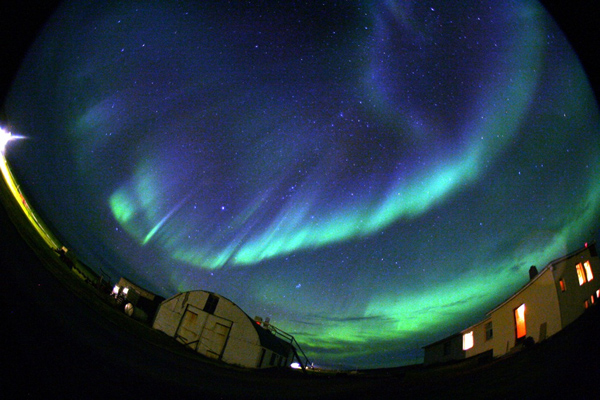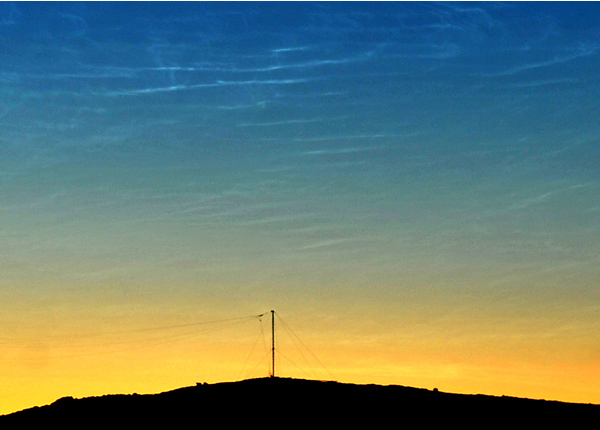The target of the Space and Upper Atmospheric Sciences Group ranges from the stratosphere (above 10km) to the interplanetary space of the solar system.
Study on aurora and the link between
solar wind, magnetosphere, and ionosphere
Auroras, the most majestic and beautiful phenomenon in the polar region, remain puzzling and of great interest to researchers. An aurora is excited by electrons and protons precipitating from space near the Earth (geospace) to the polar atmosphere along the geomagnetic field lines and reflects variations in the geospace environment, which changes dynamically due to interaction between the solar wind, the magnetosphere and the ionosphere.
We have been conducting ground-based network observations in the Antarctic and Arctic regions with radars, magnetometers, and auroral imagers. Such observational data are used to study the mechanisms of various auroral phenomena and solar wind-magnetosphere-ionosphere coupling.

Aurora observed above Iceland, which is the geomagnetic conjugate point of Syowa Station
Middle and upper atmosphere research

Polar mesospheric cloud (PMC) observed at Syowa Station - Photo by Y. Takeda (JARE50)
